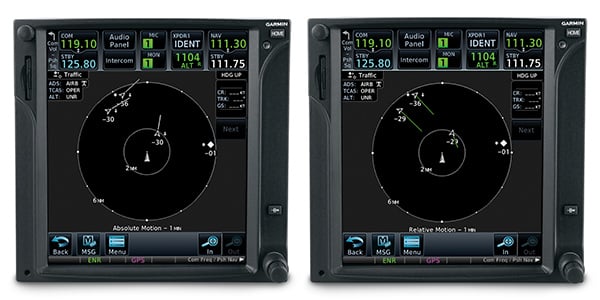What’s the difference between 1090 and 978?
You probably know by now that most airplanes will have to be equipped with ADS-B Out by 2020 in order to meet the FAA mandate. Beyond that basic issue, though, there are still a lot of questions to consider. One of the first is 1090 vs. 978. That is, should you install an ADS-B Out transponder that works on the 1090 MHz frequency (sometimes called 1090ES) or the 978 MHz frequency (sometimes called a 978 UAT)?
There is no simple answer, and all ADS-B Out transponders perform the same basic function no matter what frequency they use. Both meet the 2020 requirement. But there are some important differences to consider, depending on the type of airplane you fly.
- What is the total installed cost? The cost of ADS-B Out hardware is only one part of the equation – be sure to ask about the installation time and cost as well. 1090ES transponders are mounted in the avionics stack, in place of an existing Mode C transponder, so they don’t require the removal of the interior like most 978 installations (which are typically mounted in the tail of the airplane). In many cases, the installation cost is 30-50% less for a 1090 solution.
- How old is your Mode C transponder? In addition to ADS-B Out, you’ll still need to have a traditional transponder after 2020. If your existing Mode C transponder is on its last legs, a 1090ES transponder is probably the right answer, since it checks both boxes. In addition to meeting the mandate, you’ll get the features of a new transponder, like a clear digital display, push-button code entry and a dedicated VFR button. 978 requires you to maintain your existing Mode C transponder, so if you already have a new one you may be able to save money with a UAT.
- How integrated is each solution? Some 978 UAT transponders require separate control heads to synchronize the squawk code with your existing Mode C transponder – or even a separate panel-mounted indicator light. 1090ES solutions are integrated solutions: simply connect it to your existing transponder antenna and altitude encoder, then add a WAAS GPS antenna if a built-in GPS is included. The one exception is Garmin’s GDL88/84, 978 solutions that automatically sync with your Mode C transponder.
- Do you fly internationally? 978 UAT transponders are limited to use in the United States, so pilots traveling to Canada, Mexico or the Caribbean should choose a 1090ES transponder.
- Do you fly above 18,000 ft.? Aircraft equipped with 1090ES transponders are authorized to fly at all altitudes, whereas 978 UAT transponders are not permitted above 18,000 ft.
- What multi-function display do you have? If you have a glass cockpit or a modern navigator, a 978 UAT can display subscription-free weather and traffic on those beautiful color screen (if your 978 solution is an ADS-B In model in addition to Out). If you already receive weather and traffic with a portable ADS-B receiver, you can probably save some money by just choosing Out.
Mac McClellan, writing in EAA Sport Aviation, sums it up well: “If you plan to keep your airplane much beyond 2020, I think the new transponder route makes a great deal more sense… the 1090ES transponder install requires half the new antennas, no new cockpit panel unit, and a fraction of the wires.” On the other hand, if you have a glass panel, a remote-mounted 978 unit may make a lot more sense – especially if it’s done as part of a larger avionics upgrade.
Whichever ADS-B Out solution you choose, be sure to focus on the total installed cost of your new avionics. Read the fine print and ask informed questions about labor costs to install your new transponder and any additional parts that may be required. The right answer for you is the package that meets the 2020 ADS-B mandate, offers the upgrades your airplane needs, and is affordable to install.










